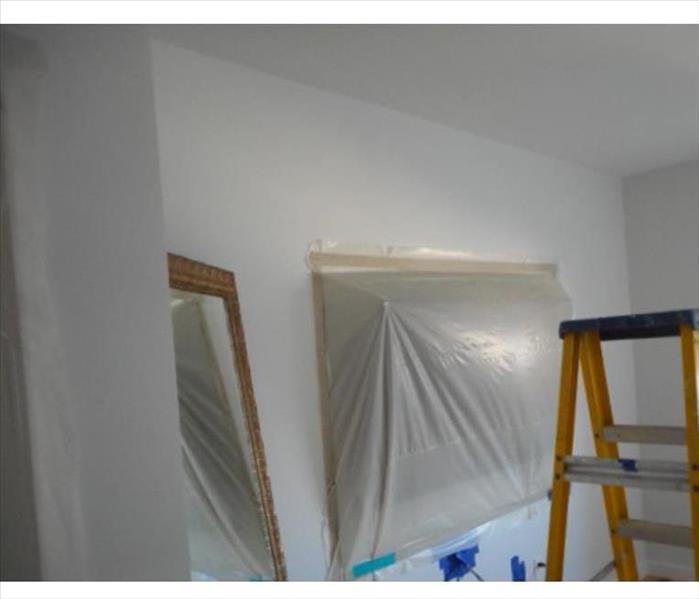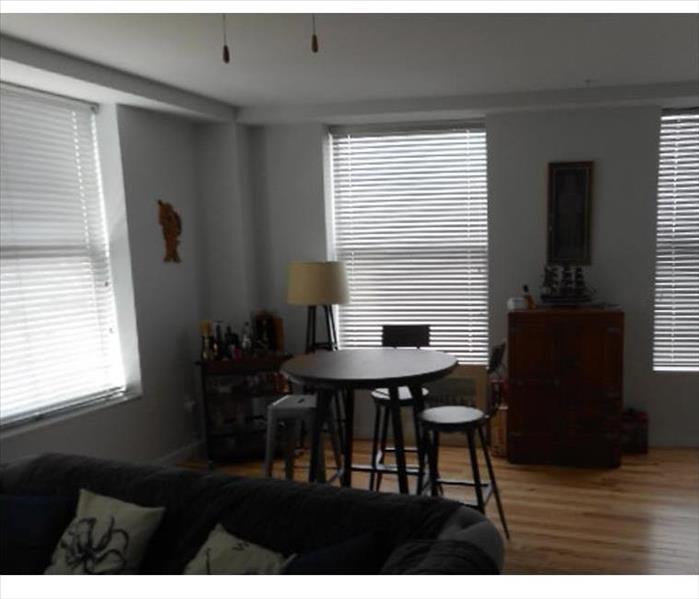Remediating Mold Damage from a Dallas Home
Unresolved moisture led to mold growth in this Dallas home, leaving the occupants exposed to threats like volatile organic compounds, harsh odors, and worsening conditions. As a trusted name in mold remediation, the homeowner knew to call SERVPRO for our fast response and mold removal expertise. We were able to help in this situation to provide a dry and sanitary space you see in the After Photo with our efficient black mold removal and cleaning techniques. Our restoration and recovery plan was generated with a mold inspection.
Identifying the Damage to a Dallas Home
The mold inspection process was conducted by our SERVPRO crew chief and production manager. By walking through the property with the customer, we could better identify the homeowner's priorities and determine the damage as it developed in the property. This inspection helped showcase where mold was actively growing in the living room, it also showed that the adjacent hallway and connected rooms were free of microbial threats. This same inspection gets conducted a final time to verify our successes after mold remediation.
Stopping Cross-Contamination of Clean Areas
The Before Photo showcases a critical aspect of our mold remediation process: containment. Using thick poly sheeting and taping down the edges, as you see in the picture, we can close off pathways for circulating active mold spores looking for new surfaces to use as hosts for colonies. The photograph shows how this plastic sheeting can also protect fixtures where they are installed rather than removing them for remediation purposes.
Removing Mold from Affected Surfaces
With surface mold with visible spotting like our SERVPRO team encountered in this Dallas home, we relied on several mold remediation practices. While antimicrobial cleaning could resolve much of the damage where it was found, our remediation team also used processes like dry ice blasting to eliminate the organism beyond the surface layer without damaging the underlying substrate.
In this situation, controlled demolition was not necessary, as you can tell from the in-tact walls of the Before Photo. Had the damage been more severe, our general contractor license would have been valuable in allowing us the ability to remove compromised materials and reconstruct damaged areas after mold exposure.
Mold Inhibitors and Mold Prevention Measures
Nearly all surfaces that required mold remediation and nearby building materials like drywall and the wood flooring you see in the After Photo were treated with antimicrobial agents and mold inhibiting products in our inventory. Stopping the spread of microbes in the house was effective when these microorganisms had no new surfaces to infest.
Deodorization for a Final Touch
Because the main damaged area was a high-traffic portion of the property, surfaces like the drywall and the furniture absorbed the musty odors typical of mold colonization. While the After Photo shows the clean and restored living room in this Dallas home, the homeowner was also pleased by our use of thermal fogging to neutralize harsh smells and leave a pleasant odor in its place.





 24/7 Emergency Service
24/7 Emergency Service
